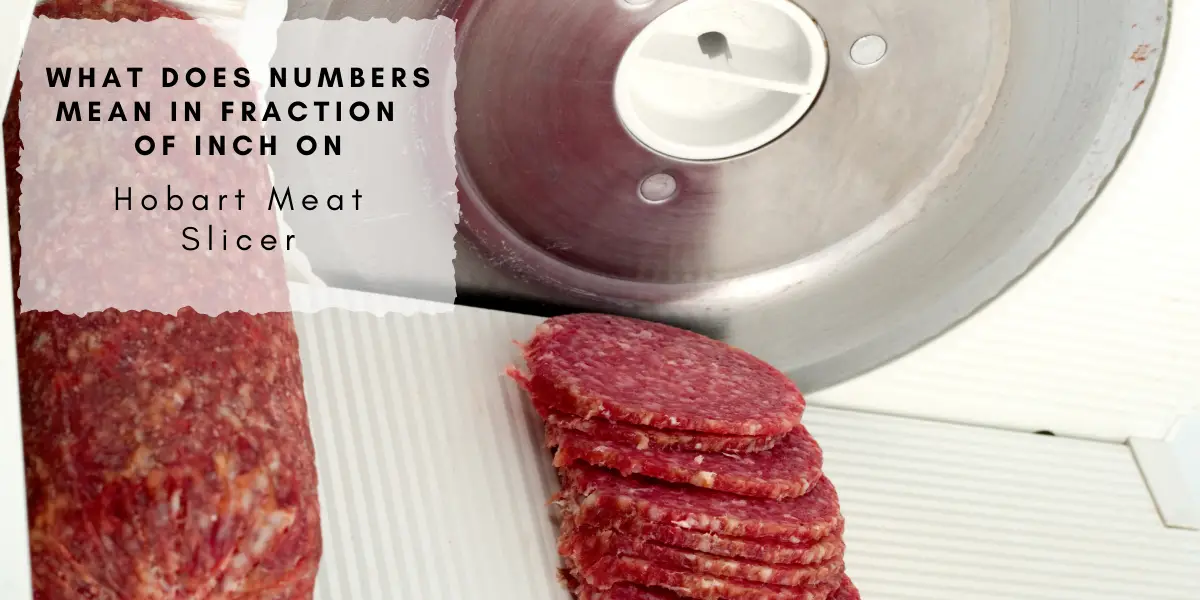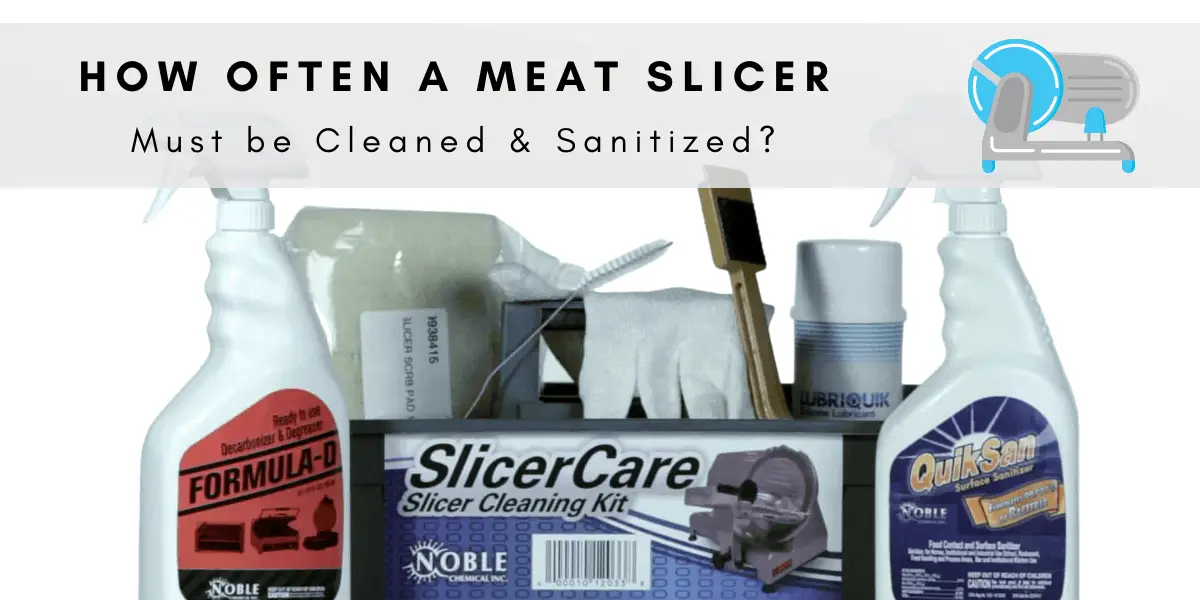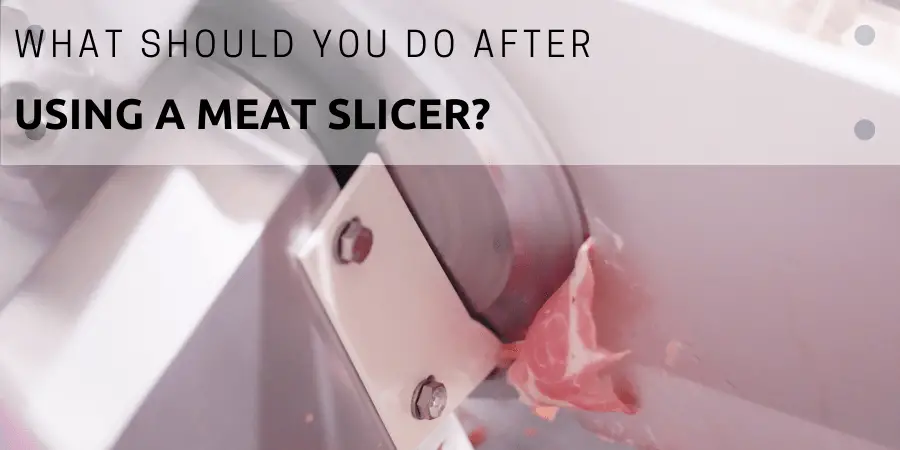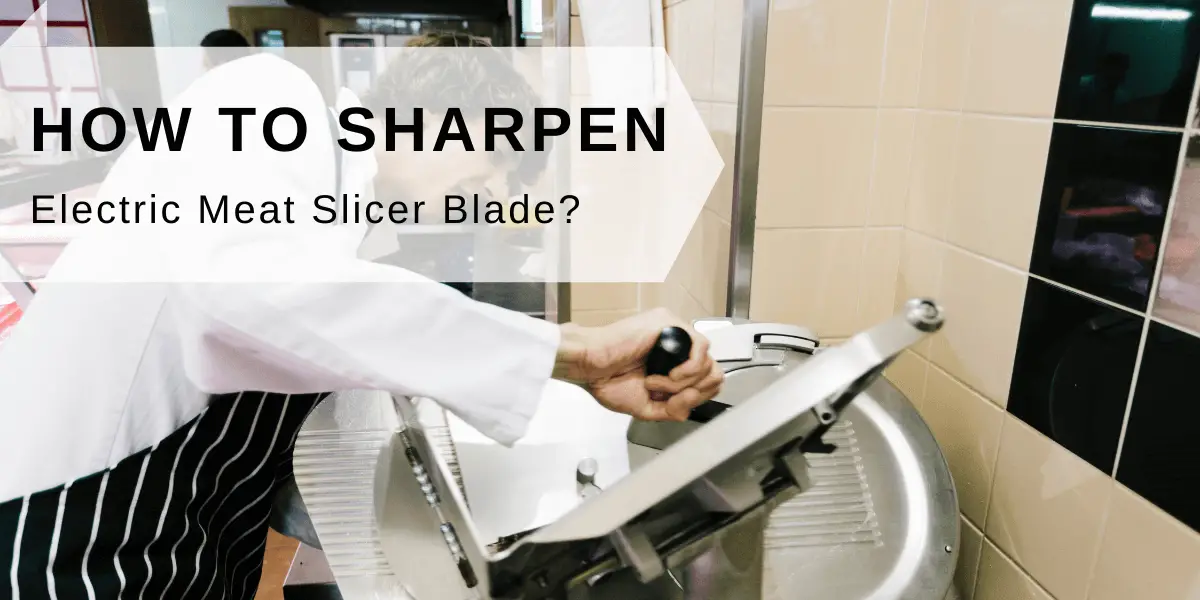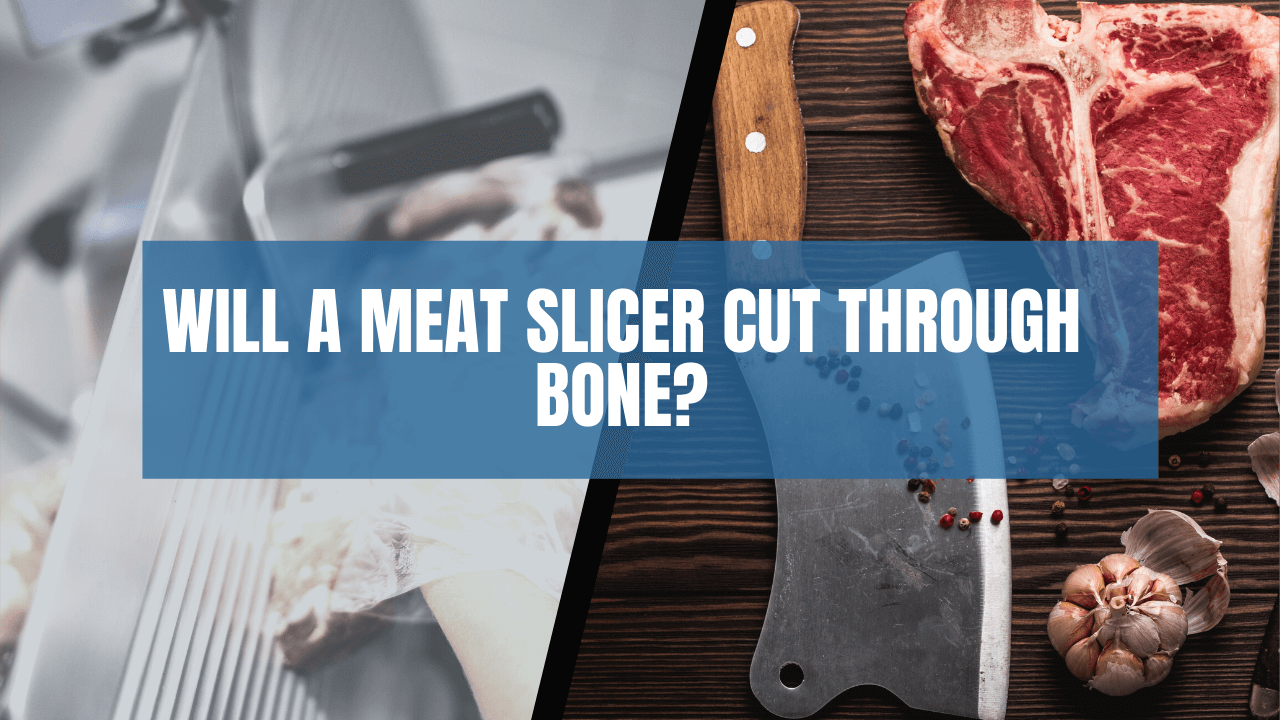Serrated blades are great for cutting tough meats and bread, while straight blades offer precision and versatility. Serrated blades require less force and are effective for tough or fibrous meats and crispy baked goods. On the other hand, straight blades provide better control and are easier to sharpen and maintain. Consider factors like blade sharpness, blade-to-work contact, and blade capacity when choosing the right blade for your meat slicer. Proper usage and maintenance, including regular cleaning and sharpening, ensure safe and efficient slicing.
Here are the differences between the two and help you understand which blade is best suited for your slicing needs. Whether you’re a professional chef or a home cook, this guide will provide valuable insights into the world of kitchen slicing.
Serrated Blade: Cutting Through Toughness and Precision
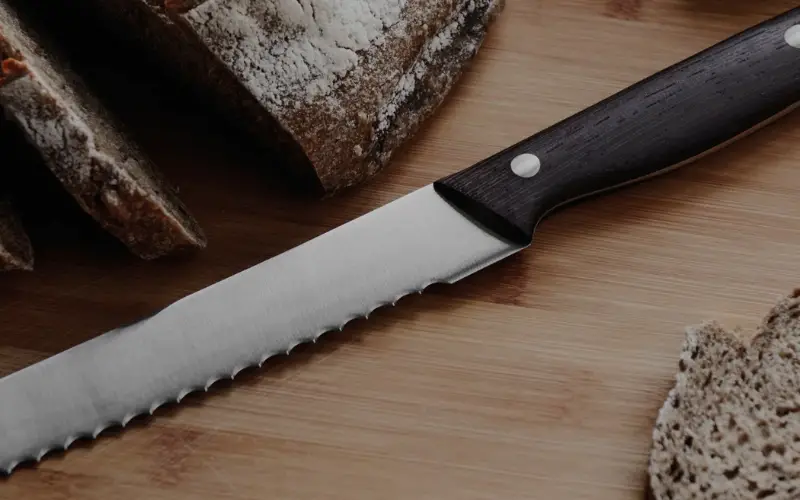
Serrated blades are unique in their toothed design, resembling rotating circular bread knives. They offer specific features and benefits that make them well-suited for certain cutting tasks. Here’s a detailed look at the characteristics and advantages of serrated blades:
Serrated Blade Features:
Jagged edges with teeth along the blade:
- Serrated blades have small, pointed teeth along their edges, forming a series of saw-like notches.
- These teeth create a distinctive cutting surface that grips the food being sliced, allowing for efficient and controlled cutting.
Saw-like motion for cutting through thin chunks of meat:
- The serrated blade’s teeth enable a saw-like motion when cutting through thin chunks of meat.
- The back-and-forth sawing action aids in breaking down the meat fibers, making it easier to slice through tough or fibrous cuts.
Suitable for cutting tough or fibrous meats:
- Serrated blades excel at slicing through tough cuts of meat, such as roasts or cuts with connective tissues.
- The jagged teeth of the blade effectively bite into the meat, providing a better grip and reducing the effort required to slice through it.
Ideal for slicing bread without damaging the crust:
- Serrated blades are particularly well-suited for slicing bread and other baked goods.
- The pointed teeth grip the crust of the bread while cutting, allowing for clean slices without damaging the crust’s integrity.
Benefits of Serrated Blades:
Effective at slicing through tough or fibrous meats:
- Serrated blades are designed to handle cuts of meat that require more cutting force due to their toughness or fibrous nature.
- The teeth of the blade provide better control and allow for smooth and precise slicing without tearing the meat apart.
Requires less force to slice, reducing hand fatigue:
- The serrated blade’s unique design and toothed edge require less force to slice through tough meats.
- This feature can be especially beneficial for those with weaker hands or individuals who need to slice large quantities of meat, reducing hand fatigue during the process.
Great for cutting bread and other baked goods:
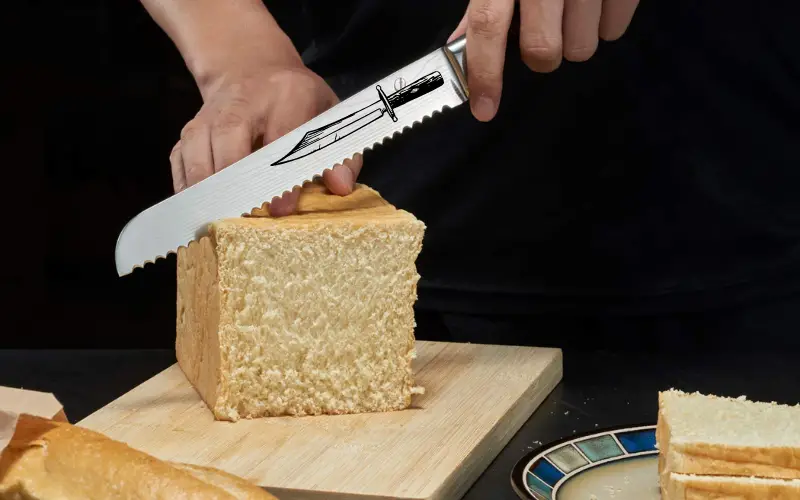
- Serrated blades are a go-to choice for slicing bread and other baked goods with a crusty exterior and a soft interior.
- The teeth of the blade grip the bread’s crust, allowing for clean and precise cuts without squishing or damaging the loaf.
Drawbacks of Serrated Blades
While serrated blades offer unique advantages in slicing tough meats and bread, they also have a couple of drawbacks that are important to consider.
Challenging to sharpen due to small and closely spaced teeth:
- Sharpening serrated blades can be more difficult compared to sharpening straight blades.
- The small and closely spaced teeth require specialized sharpening techniques and tools.
- Achieving a uniformly sharp edge along the entire length of the blade can be a challenging task.
Serrations can trap food particles, making cleaning more difficult:
- The jagged teeth on serrated blades can sometimes trap small food particles during slicing.
- These trapped particles can be difficult to remove, making cleaning the blade more challenging.
- Proper cleaning and maintenance are necessary to prevent the accumulation of food debris and maintain the blade’s performance.
Straight Blade: Precision and Versatility
Straight blades, also known as fine-edge blades, offer a smooth and unpolished cutting edge that allows for clean and precise slicing. Here are the features, benefits, and limitations of straight blades in detail:
Straight Blade Features:
Smooth, consistently sharp edge:
- Straight blades have a continuous, smooth cutting edge without any serrations or teeth.
- This smooth edge allows for precise and controlled cutting, making it ideal for tasks that require accuracy.
Preferred by professional chefs for better control and precision:
- Straight blades are often the preferred choice of professional chefs due to their ability to provide better control over the cutting process.
- The absence of serrations allows chefs to achieve more delicate and precise slices, resulting in visually appealing presentations.
Easier to sharpen and maintain compared to serrated blades:
- Straight blades are generally easier to sharpen than serrated blades.
- With a smooth edge, it is simpler to achieve a sharp edge using traditional sharpening methods such as honing rods or sharpening stones.
- Additionally, the absence of serrations makes cleaning the blade easier as there are no small crevices to trap food particles.
Benefits of Straight Blades:
Allows for more control and precision when slicing:
- The smooth and sharp edge of straight blades enables precise control over the slicing process.
- This is particularly beneficial when slicing delicate or thin cuts of meat, vegetables, or other ingredients where precision is key.
Generally easier to sharpen and maintain:
- Straight blades are easier to sharpen, allowing you to maintain a consistently sharp edge.
- Regular sharpening ensures optimal cutting performance and prolongs the blade’s lifespan.
The smooth edge is easier to clean:
- The absence of serrations on straight blades simplifies the cleaning process.
- There are no small crevices or teeth where food particles can get trapped, making it easier to keep the blade clean and hygienic.
Limitations of Straight Blades:
May require more force to cut tough or fibrous meats:
- Straight blades, lacking the serrated edge’s gripping action, may require more force to cut through tough or fibrous cuts of meat.
- Extra care and effort may be needed to ensure clean and even slices when working with challenging cuts.
Less effective at slicing bread and crispy baked goods:
- Straight blades are not as effective as serrated blades when it comes to cutting through bread and crispy baked goods.
- The absence of serrations can result in more pressure being applied to the food, potentially squishing or damaging its delicate texture.
Choosing the Right Blade: Factors to Consider
Selecting the right blade for your meat slicer is essential to achieve optimal slicing results. Consider the following key factors when making your decision:
Blade Sharpness and Quality:
Higher-quality blades retain sharpness longer and are more durable:
- Investing in a higher-quality blade ensures that it will maintain its sharpness over an extended period.
- These blades are often made from superior materials and undergo precise manufacturing processes, resulting in better cutting performance and longevity.
- A sharper blade contributes to cleaner slices and reduces the risk of tearing or shredding the meat.
Blade-to-Work Contact:
Thicker blades handle more substantial cuts, while thinner edges result in efficient slicing with less waste:
- Thicker blades are suitable for slicing thicker cuts of meat or dense foods.
- The increased blade thickness provides stability and strength, allowing for smooth and precise cutting through tougher materials.
- Thinner edges are more efficient for slicing thinner cuts of meat or delicate ingredients.
- A thinner blade reduces waste by minimizing the amount of meat lost during the slicing process.
Blade Capacity:
Choose a blade size (8 to 14 inches) that suits your desired thickness of cut:
- Blade size directly affects the thickness of the slices you can achieve.
- Smaller blades (around 8 to 10 inches) are ideal for thinner slices, such as deli-style meats or cured meats like prosciutto.
- Larger blades (around 12 to 14 inches) are better suited for thicker cuts, such as roasts or large chunks of meat.
- Consider the types of food you typically slice and the desired thickness of your slices when selecting the blade size.
Tips for Using and Maintaining a Meat Slicer Blade
Using a meat slicer correctly and ensuring proper maintenance of the blade are crucial for safe and efficient slicing.
Allow Meat to Cool:
- Avoid slicing meat immediately after cooking, especially if it has just come out of the oven or grill.
- Allowing the meat to cool for a short period helps it retain its texture, juiciness, and structural integrity.
- Slicing hot meat can lead to the loss of natural juices and potentially affect the meat’s overall quality.
Keep Out of Reach:
- Store the meat slicer and blades in a safe area that is inaccessible to children.
- Meat slicers have sharp blades that can cause serious injuries if mishandled.
- Ensure the slicer is placed in a secure location or use safety locks to prevent unauthorized access.
Ensure Proper Blade Attachment:
- Before using the meat slicer, double-check that the blade is securely attached.
- Loose or improperly attached blades can result in accidents or inconsistent slicing.
- Follow the manufacturer’s instructions for blade attachment, ensuring it is tightened and locked in place.
Turn Off When Inactive:
- Always switch off the meat slicer when it is not in use or during kitchen activities.
- Leaving the slicer running unattended can pose risks and potentially cause accidents.
- This safety measure also helps conserve energy and prolong the lifespan of the slicer.
Conclusion:
Choosing the right blade for your meat slicer is crucial for achieving perfect slices. Serrated blades excel at cutting tough meats and bread, while straight blades offer precision and versatility. Consider your specific slicing needs and the benefits of each blade type. Proper usage and maintenance ensure safe and efficient slicing. Regular cleaning and sharpening keep your meat slicer blade in optimal condition. Enjoy the art of slicing with the perfect blade for your kitchen.
FAQs:
Can a serrated blade be used for slicing bread?
Serrated blades are ideal for cutting through bread without damaging the crust.
Are straight blades better for precision cutting?
Yes, straight blades offer better control and precision when slicing, making them preferred by professional chefs.
Which blade requires less force to slice?
Serrated blades require less force, reducing hand fatigue during slicing.
Is it difficult to sharpen a serrated blade?
Yes, serrated blades can be more challenging to sharpen due to their small and closely spaced teeth.
Can a straight blade be used for slicing tough meats?
Straight blades may require more force to slice tough or fibrous meats.
How should I clean my meat slicer blade?
Clean the blade using a rag and avoid putting it in the dishwasher to maintain its sharpness.
What is the recommended way to sharpen a meat slicer blade?
Use a suitable sharpening stone and follow the manufacturer’s instructions for sharpening the blade.
Key Takeaways:
- Serrated blades are ideal for cutting tough meats and bread, while straight blades offer precision and versatility.
- Serrated blades require less force to slice and are effective for tough or fibrous meats and crispy baked goods.
- Straight blades provide better control and are easier to sharpen and maintain.
- Consider factors such as blade sharpness, blade-to-work contact, and blade capacity when choosing the right blade.
- Proper usage and maintenance, including regular cleaning and sharpening, ensure safe and efficient slicing.
Pros And Cons, Similarities And Differences:
Here is a comparison table highlighting the pros, cons, and key similarities and differences between a meat slicer serrated blade and a straight blade:
| Aspect | Serrated Blade | Straight Blade |
|---|---|---|
| Pros | – Effective at slicing tough or fibrous meats | – Allows for more control and precision when slicing |
| – Requires less force to slice, reducing hand fatigue | – Generally easier to sharpen and maintain | |
| – Great for cutting bread and other baked goods | – Smooth edge is easier to clean | |
| Cons | – Challenging to sharpen due to small and closely spaced teeth | – May require more force to cut tough or fibrous meats |
| – Serrations can trap food particles, making cleaning difficult | – Less effective at slicing bread and crispy baked goods | |
| Similarities | – Can both be used in meat slicers | – Used for slicing various types of foods |
| – Enhance slicing precision and efficiency | – Require regular maintenance for optimal performance | |
| – Available in different sizes for different cutting needs | – Improve safety with proper usage and handling | |
| Differences | – Serrated blade has jagged edges and saw-like motion | – Straight blade has a smooth, unpolished cutting edge |
| – Ideal for slicing tough meats and bread | – Preferred by professional chefs for control and precision | |
| – May be more difficult to sharpen and clean | – Generally easier to sharpen and maintai |
References And Citations:
Here are some suggested external links related to the topic of meat slicer blades, along with corresponding anchor text:
- Tips for Properly Sharpening a Serrated Blade- https://www.masterclass.com/articles/how-to-sharpen-a-serrated-knife Anchor Text: Properly Sharpening a Serrated Blade
- Benefits of Using a Straight Blade in Meat Slicing- https://mommywithaplan.com/meat-slicer-serrated-blade-vs-smooth-blade/ Anchor Text: Benefits of Using a Straight Blade
- The Art of Slicing: Tips and Techniques- https://www.futurelearn.com/info/courses/knifeskills/0/steps/235423 Anchor Text: Tips and Techniques for Slicing.

John Hebdon is a food enthusiast, passionate chef, and author of various articles and blog posts related to food and cooking. With a deep love for all things culinary, John’s blog serves as a platform to share his extensive kitchen experiences with a broader audience.
In addition to his culinary expertise, John has a flair for writing and a natural ability to share his passion for food with others. His articles and blog posts are informative, engaging, and packed with practical tips for readers of all skill levels.
As a food enthusiast and writer, John is always on the lookout for new and exciting culinary experiences. Whether it’s trying out a new restaurant, experimenting with a new recipe, or simply sharing a favorite dish with friends and family, John is always eager to explore and share the world of food with others.

